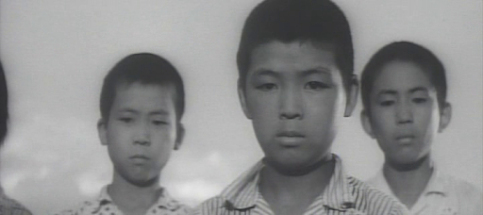Obscure Japanese Film #55
In their first film together, a comedy thriller made for the Daiei company, director Kon Ichikawa gives star Machiko Kyo one of her best roles as a resourceful heroine who outsmarts all the scheming men surrounding her. She plays Nagako, a reporter who is fired from her job after writing an article exposing police corruption.
Her flatmate, Suga (old lady specialist Tanie Kitabayashi looking young for a change), inspired by stories of people mysteriously going missing in Japan, suggests an idea she can pitch to a magazine: Nagako will ‘go missing’ herself for a month while the magazine offers a 500,000 yen reward to any reader who can find her.
However, when the magazine editor refuses to give her an advance, Nagako approaches dodgy bank manager Shirasu (So Yamamura) for a loan to cover her expenses, but he conspires with a senior clerk, Chigi (Eiji Funakoshi), to win the prize money for himself, after which things become increasingly complicated to the point of (clearly intentional) absurdity.
Machiko Kyo, appearing in a number of guises and showing a real flair for comedy here, is in almost every scene and provides reason enough for watching.
Feminists will enjoy watching her run rings around the men, and one also has to admire her willingness to look entirely unglamorous in a number of scenes. Although it’s Kyo who carries the film, The Hole is also a fast-paced and fun movie with a strong supporting cast packed with Ichikawa regulars, including the wonderful Jun Hamamura as an eccentric cab driver.
The director even throws in a self-mocking cameo from Shintaro Ishihara, who says at one point, ‘I found novel writing boring. I sing now.’ (Ishihara, who began as a writer, was known for dabbling in acting and various other pursuits; he later became a right-wing politician and was Governer of Tokyo from 1999-2012).
The screenplay was written by Ichikawa and his wife Natto Wada under their pseudonym ‘Kurisutei’, a nod to Agatha Christie. However, they failed to credit William Pearson, the American author upon whose 1954 novel The Beautiful Frame the central idea was lifted. Having said that, it should be noted that the novel featured a male protagonist and seems to have been a fairly straight piece of pulp fiction which Ichikawa and Wada turned into something far more original.













